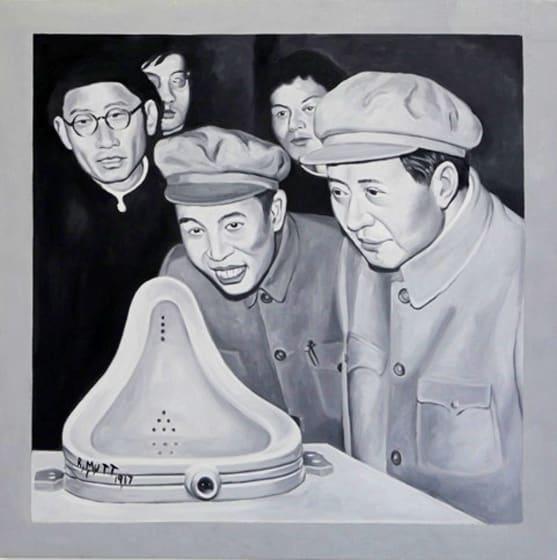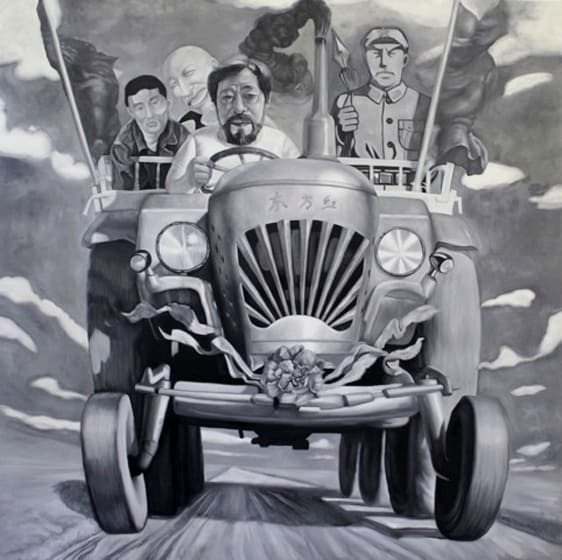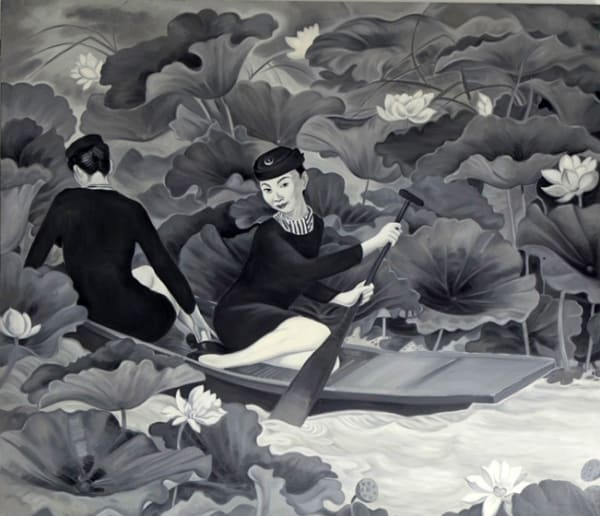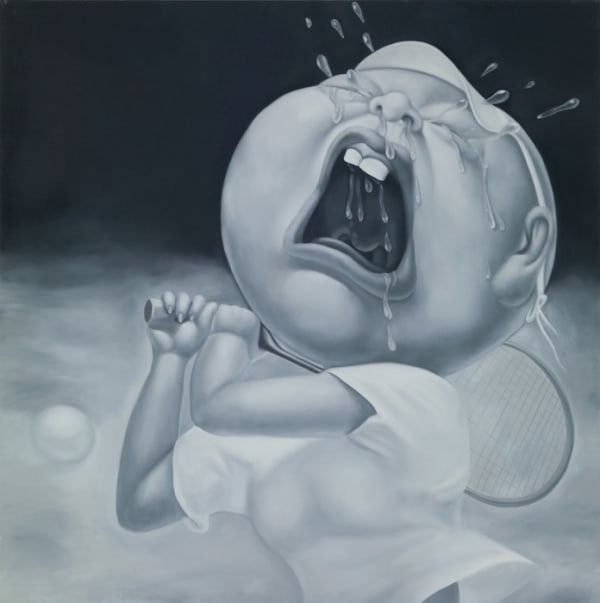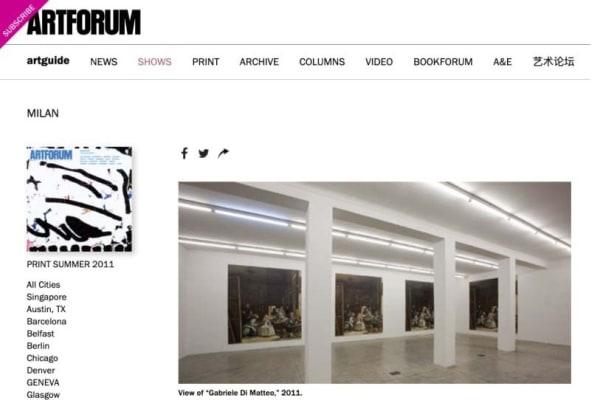China: Made in Italy (2009)
Gabriele Di Matteo
China: Made in Italy was conceived after Di Matteo started working with a group of “commercial painters” in Naples—named due to the fact that they can paint up to ten canvases a day using a technique that recalls industrial techniques of serialisation, automatisation and standardisation. The paintings made by the group would generally repeat such themes as landscapes, marinas and still life which would be sold en masse as decoration. This group of painters used to be very prolific up until the Eighties when Chinese painters displaced them by developing the same technique and offering their work for half the price. This phenomenon gave Di Matteo the idea to hire a team of these virtually unemployed painters to reproduce the most well-known paintings from famous contemporary Chinese artists like Ma Liuming, Zhang Xiaogang, Yang Shaobin and Zhou Tiehai, to name only a few. Such a gesture was a kind of ironic, and hopeless, payback operation. The works were reproduced in exactly the same format only in different tonalities of grey.
Complete installation: 61 paintings, oil on canvas, each of different measures. Unlimited series.
Gabriele Di Matteo has been engaged for several years in a critical reflection on the state of work and the notion of author and originality. For appropriation and reproducibility he puts the image in front of his mise en abîme. With his recent series China, Made in Italy, Di Matteo is the pirate of the new contemporary Chinese wave. He has a pastiche in black and white paintings now icons of most of the Chinese artists in vogue. More than a parody of the spiraling speculative art market, China, Made in Italy suggests the many meanings explored by the artist. State of the author, fetishism of goods, cloning, the reverse of history (Made in
China turns into China, Made in
Italy). In line with a
Duchamp, Gabriele Di Matteo sows problems and poses a critical challenge to reality. It affects to shake the order and authority of the image.
 Gabriele Di MatteoAFTER SHI XINNING , 2009Oil on canvas100 x 100 cm
Gabriele Di MatteoAFTER SHI XINNING , 2009Oil on canvas100 x 100 cm Gabriele Di MatteoAFTER WANG XINGWEI, 2009Oil on canvas162 x 130 cm
Gabriele Di MatteoAFTER WANG XINGWEI, 2009Oil on canvas162 x 130 cm Gabriele Di MatteoAFTER YUE MINJUM, 2009Oil on canvas193.5 x 221 cm
Gabriele Di MatteoAFTER YUE MINJUM, 2009Oil on canvas193.5 x 221 cm Gabriele Di MatteoChina Made in Italy, After YIN JUN., 2009oil on canvas150 x 150 cm
Gabriele Di MatteoChina Made in Italy, After YIN JUN., 2009oil on canvas150 x 150 cm









